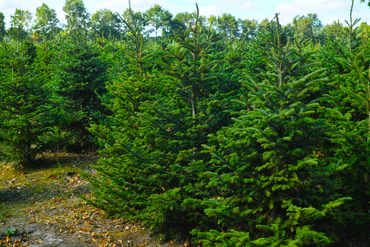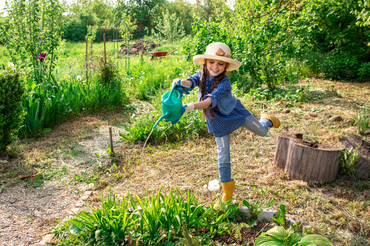
There are so many types of Christmas trees out there that it can be hard to know which one is the right choice for you. To help you make an informed decision, we’ll walk you through the pros and cons of some of the most popular options available and explain what makes each type unique. Keep reading to find out more. Which type of Christmas tree is best for you? Whether you want something traditional or something a little more unusual, there’s sure to be a tree that tickles your fancy. Let’s take a look at some of your options.
Why choose the Nordmann Fir Christmas Tree
Nordmann fir is a type of evergreen tree that is known for its soft, silvery-green needles and the delicate aroma that it releases when it’s being cut down.
Pros of a Nordmann Fir Christmas Tree:
- Nordmann firs are exceptionally fragrant and make a great Christmas decoration.
- Their needles last really well indoors and are highly durable, meaning they won’t drop as quickly as some other types of trees.
- Their soft needles will also make them a good choice for families with small children, who may otherwise be tempted to pull off the decorations.
- If you’re looking for a truly authentic Christmas experience, a Nordmann fir is the way to go.
Cons of a Nordmann Fir Christmas Tree:
The same quality that makes Nordmann firs smell delicious also makes them bad for your indoor air quality.
- They use up a lot of oxygen, which means that they need a lot of water to stay fresh.
- You’ll need to keep an eye on the water levels in the soil to ensure that they’re not too wet and that the tree is getting just enough to stay fresh.
Norway Spruce Christmas Tree
Spruce trees make excellent Christmas trees because they’re cheap and easy to source. They’re also very durable and last for a long time before losing their needles.
Pros of a Norway Spruce Christmas Tree:
One of the biggest pros of a Norway spruce is that you can get them in a wide range of sizes, from tabletop trees to full-sized trees.
- This means that you can find one that works for your home, no matter how much space you have available.
- These traditional spruce trees are beautiful, and they have a strong fragrance.
- They have a very classic Christmas tree feel to them, which makes them a great choice for people who want a more traditional decoration.
Cons of a Norway Spruce Christmas Tree:
- Spruce trees don’t retain their needles well, so please keep in mind you’ll need to vacuum now and then.
- They also don’t do very well in warm environments. If you place it in an area that gets a lot of heat, you might find that the needles drop off your tree very quickly.
Serbian Spruce Christmas Tree
Serbian Spruce trees are similar to the Norway spruce tree, with the main difference being that they’re slightly less hardy.
Pros of a Serbian Spruce Christmas Tree:
- They have a fragrant smell that’s reminiscent of pine trees, which makes them a great option if you want a very aromatic Christmas tree.
- They also have a beautiful, soft texture that makes them a real centerpiece for any room.
- Like Norwegian spruce trees, Serbian spruce trees are relatively cheap, which means that you don’t have to spend a lot on a tree that’s purely for decoration.
Cons of a Serbian Spruce Christmas Tree:
- They’re not quite as hardy as the Norway spruce, so they don’t last as long.
- They don’t grow quite as quickly as other types of Christmas trees either, so you’ll need to wait a few years before you can enjoy a freshly-cut tree.
Fraser Fir Christmas Tree
Fraser fir trees are another popular Christmas tree type. Their beautiful, dark green colour looks terrific, and they have a very fragrant smell, too.
Pros of a Fraser Fir Christmas Tree:
- Fraser fir Christmas trees are very fragrant and can last for up to 10 weeks if you keep them in water.
- They make a great decoration for inside your home and also smell great, so they’re a great choice if you want to enjoy a fresh smell throughout the holidays.
- Unlike some other types of Christmas trees, Fraser firs require very low maintenance.
- They don’t need much water and can easily be kept in a container indoors – although they do look great planted in the ground outdoors as well.
Cons of a Fraser Fir Christmas Tree:
- They have sharp needles, so please watch out if you have young children or pets.
- Fraser fir Christmas trees are notorious for shedding their needles!
- If you’re not prepared for a little bit of mess, this tree may not be for you.
Blue Spruce Christmas Tree
Blue spruce trees are a beautiful, shiny blue, silvery colour. They’re a very common type of Christmas tree in the southwestern United States and are often grown for ornamental purposes because of their colour.
Pros of a Blue Spruce Christmas Tree:
Blue spruce trees are known for their vibrant shade of blue, which makes them a great option if you want something that stands out from the crowd.
- Their vibrant colour is sure to impress, and they smell great too.
- They’re relatively cheap to buy and easy to maintain, so they’re a good choice if you’re new to having a Christmas tree.
Cons of a Blue Spruce Christmas Tree:
- They don’t have a fantastic needle retention rate, so make sure to keep them in water and out of the heat, as this can accelerate their ageing process.
- Blue spruce trees aren’t as durable as some of the other types on this list.
- They’re not quite as hardy as a Fraser fir tree and don’t last as long as a Norway spruce.
Scotch Pine Christmas Tree
If you really want to go all-out, the Scotch Pine Christmas Tree is probably the best option on our list for you. Scotch pine trees are one of the hardiest trees on this list. They’re native to northern Europe, and they’re commonly used for landscaping in colder climates.
Pros of a Scotch Pine Christmas Tree:
- Scotch pine trees are very hardy and can withstand very cold temperatures. This makes them a great choice for people who live in colder climates and need to keep their tree outside for a long time before bringing it inside.
- This tree is one of the tallest types of Christmas trees available, so you’ll have plenty of space for your decorations.
Cons of a Scotch Pine Christmas Tree:
- Be aware, though: like the Blue spruce Christmas tree, the Scotch pine Christmas tree is very messy and will shed its needles.
Buy the perfect Christmas Tree at Horticentre
There are so many types of Christmas trees out there that it can be hard to know which one is the right choice for you. To help you make an informed decision, we’ve walked you through the pros and cons of some of the most popular options available and explained what makes each type unique. Whether you want something traditional or something a little more unusual, there’s sure to be a tree here that tickles your fancy. Come to our garden center we're we love to help you get the perfect tree this Christmas, feel free to contact us if you have any questions!




